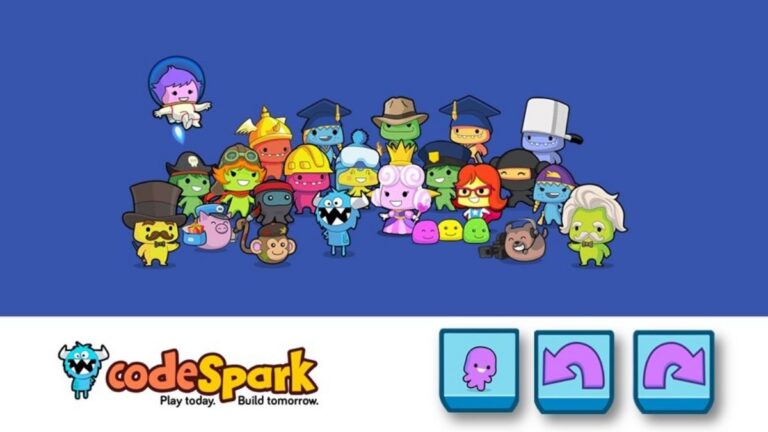Speech Therapy for Children: The Parent Booklet
As parents, it can be hard to witness your child struggling with something we take for granted so easily. It is very important, therefore, to understand the role of communication in children’s development. Fortunately, speech therapy has become a beacon of hope for many parents, offering strategies and support to help children overcome speech challenges. In this article, I will share my personal perspective as a parent and delve into the various aspects of speech therapy, including its definition, signs that indicate a need for therapy, appropriate timing for intervention, techniques for toddlers and older children, the role of early intervention, incorporating speech therapy at home, essential questions to ask, finding reliable pediatric speech therapy services, and considerations regarding costs.
What is speech therapy for children?
Speech therapy for children is a specialized form of therapy that focuses on improving their communication skills and addressing speech and language challenges. It is provided by qualified speech-language pathologists who have expertise in working with children. The goal of speech therapy is to help children overcome difficulties in areas such as speech production, language comprehension and expression, articulation, and social communication. Through engaging and interactive activities, therapists work closely with children to target specific goals and promote effective communication. These activities may include practicing sounds and words, using visual aids, engaging in conversations and storytelling, and developing social skills. Parent involvement is crucial as they play an active role in supporting their child’s progress and practicing techniques at home.
Does your child need speech therapy?
Recognizing whether your child needs speech therapy can be challenging, but there are signs to watch out for. Some common indications that your child may benefit from speech therapy include:
- Pronunciation difficulties that persist beyond the expected age range.
- Limited vocabulary or struggles with word retrieval.
- Inability to form sentences or use age-appropriate grammar.
- Difficulty understanding and following instructions.
- Challenges with social interaction, such as maintaining conversations or understanding nonverbal cues.
When should speech therapy be introduced?
The timing for introducing speech therapy for children varies depending on the child’s specific needs and developmental milestones. It is generally recommended to consider speech therapy if your child:
- Shows persistent speech and language delays beyond the age when most children have acquired those skills.
- Experiences frustration or exhibits a lack of confidence due to communication difficulties.
- Demonstrates significant difficulty being understood by others.
Speech therapy for toddlers: Strategies and Techniques
For toddlers, speech therapy often focuses on play-based interventions to engage their attention and foster communication skills. Strategies may include:
Modeling and Expansion
One effective strategy used in speech therapy for toddlers is modeling and expansion. The speech therapist will model correct pronunciation and language structures while engaging in play or conversation with the child. For example, if the child says, “car,” the therapist may respond by expanding the utterance and saying, “Yes, it’s a red car!” This technique helps the child learn new words, and sentence structures, and improve overall language skills. Parents can also implement this strategy at home by modeling correct speech and expanding on their child’s utterances during daily interactions and playtime.
Picture Books and Flashcards
Visual aids are powerful tools in speech therapy for toddlers. Picture books and flashcards can be used to enhance vocabulary, improve language comprehension, and encourage speech production. The therapist may use picture books with vivid illustrations and simple sentences to engage the child and facilitate conversation. Flashcards with images of familiar objects or actions can help the child associate words with visual representations, promoting language acquisition and expression. Parents can incorporate these tools into daily routines by reading books together, pointing to pictures, and encouraging their child to name objects or actions.
Singing and Rhymes
Songs and rhymes are engaging and enjoyable ways to enhance language development in toddlers. Music and rhythm capture a child’s attention and stimulate language learning. Speech therapists often incorporate songs and rhymes into therapy sessions to target specific speech goals, such as improving articulation or phonological awareness. Parents can continue this practice at home by singing nursery rhymes, playing musical games, and encouraging their child to join in and imitate sounds and words. These activities not only promote speech and language skills but also foster bonding and create a positive and fun learning environment.
Articulation Exercises
Articulation exercises are essential in speech therapy for toddlers who struggle with speech clarity and pronunciation. The therapist may use various techniques to target specific sounds or speech patterns that the child finds challenging. These exercises may involve using mirrors to observe mouth movements, practicing tongue and lip exercises, or engaging in playful activities that emphasize correct articulation. Parents can support their child’s articulation practice at home by providing simple prompts, repeating words and sounds with clear articulation, and praising their efforts. It is important to make these exercises enjoyable and age-appropriate to maintain the child’s engagement and motivation.
By employing these strategies, speech therapy for toddlers can create a nurturing environment where children feel encouraged to explore their communication skills. The combination of modeling and expansion, visual aids, musical elements, and targeted articulation exercises helps toddlers build their vocabulary, improve language comprehension, enhance speech clarity, and gain confidence in their ability to communicate effectively. Remember, consistency and positive reinforcement play a crucial role in reinforcing the skills learned in therapy, so continue to support and celebrate your child’s progress at home.
Speech therapy for children: How does it go when they’re older?
As children grow older, speech therapy evolves to address more complex language skills, social communication, and academic needs. Techniques for older children may involve:
Conversation Skills
Developing effective conversation skills is a vital aspect of children’s speech therapy. Speech therapists use various techniques to help children improve their social communication abilities. These techniques may include teaching turn-taking, initiating and maintaining conversations, and understanding social cues. Therapists may provide visual supports, such as conversation boards or social stories, to help children navigate different social situations and learn appropriate conversational skills. Role-playing and interactive activities are often incorporated to practice these skills in a structured and supportive environment. Parents can reinforce conversation skills at home by engaging in meaningful conversations, providing opportunities for their child to practice initiating and responding to questions, and providing feedback and guidance on appropriate social interactions.
Language Comprehension and Expression
Language comprehension and expression are essential components of children’s speech therapy. Speech therapists use various techniques to target these areas, such as vocabulary-building activities, sentence structure exercises, and narrative development. They may employ visual aids, storytelling techniques, and interactive games to enhance comprehension skills. Therapists also encourage expressive language development by facilitating conversations, providing language models, and guiding the child in expanding their sentence structures. Parents can support language development at home by engaging in interactive reading sessions, encouraging their child to share their thoughts and feelings, and creating opportunities for storytelling and imaginative play.
Fluency and Articulation
Fluency and articulation techniques focus on improving the clarity and smoothness of a child’s speech. For children who struggle with stuttering or fluency disorders, therapists may use techniques such as slow and controlled speech, breathing exercises, and relaxation techniques to promote fluent speech production. They may also work on reducing tension and anxiety related to speaking. Articulation exercises target specific speech sounds or patterns that a child finds challenging. These exercises may involve repetitive practice, auditory discrimination activities, and tongue and lip exercises to improve articulation clarity. Parents can reinforce fluency and articulation techniques at home by providing a supportive and relaxed environment for communication, encouraging slow and relaxed speech, and practicing targeted speech sounds through games and everyday conversations.
Social Communication and Pragmatics
Social communication and pragmatics refer to the ability to use language appropriately in social situations. Speech therapists focus on teaching children the social rules, norms, and expectations for effective communication. They may use role-playing, video modeling, and social stories to teach appropriate greetings, turn-taking, listening skills, and nonverbal communication. Therapists also address perspective-taking, understanding emotions, and interpreting social cues to help children navigate social interactions successfully. Parents can support social communication skills at home by providing opportunities for their child to engage in social activities, practicing social scripts, and discussing emotions and social situations through storytelling or real-life examples.
By utilizing these techniques, speech therapy for children provides targeted interventions to address specific communication needs and enhance overall language skills. Through conversation skills, language comprehension and expression, fluency and articulation, and social communication strategies, children can develop the necessary tools to communicate effectively, engage in meaningful interactions, and navigate social situations with confidence. Parents play a crucial role in reinforcing these techniques at home, creating an environment that encourages and supports their child’s communication growth.
What is early intervention, and does it help?
Early intervention refers to the prompt identification and intervention for language and speech delay in children. Early speech therapy intervention has been shown to yield significant benefits, as it capitalizes on the brain’s plasticity during this critical developmental period. It can help children catch up to their peers, improve communication skills, build confidence, and reduce the risk of academic and social difficulties in the future.
Speech therapy for children at home
Supporting your child’s speech therapy at home can enhance their progress. Some effective practices include:
- Consistency: Encourage regular practice of speech exercises or activities recommended by the speech therapist.
- Communication Enrichment: Engage in meaningful conversations, read books together, and create opportunities for language-rich interactions.
- Visual Supports: Use visual aids, such as charts, schedules, or flashcards, to reinforce speech and language concepts.
- Play-Based Learning: Incorporate speech and language goals into everyday playtime, making it fun and engaging for your child.
How to find good pediatric speech therapy near me
To find reliable pediatric speech therapy services in your area, consider the following steps:
- Seek Recommendations: Ask your child’s pediatrician, school, or trusted parents for recommendations.
- Research Online: Look for reputable speech therapy clinics or professionals specializing in pediatric speech therapy in your locality.
- Verify Credentials: Ensure that the speech therapists are licensed and experienced in working with children.
How much does speech therapy cost?
Determining the cost of speech therapy for children can depend on various factors, including location, the specific services needed, and insurance coverage. Insurance plans may partially or fully cover speech therapy services, but it’s important to check with your provider to understand the details and potential out-of-pocket expenses. Private speech therapy clinics or independent speech-language pathologists may charge fees based on factors like session duration and the therapist’s expertise. Some clinics offer package deals or sliding scale fees based on financial need. It’s recommended to reach out to different providers to inquire about their fees, payment options, and potential financial assistance programs. Remember, while costs can vary, investing in speech therapy can have invaluable benefits for your child’s communication skills and overall development.
Embracing speech therapy and empowering communication growth!
As a parent navigating the world of speech therapy, I have come to appreciate its profound impact on my child’s communication abilities. Speech therapy, with its tailored strategies, techniques, and early intervention focus, can empower children to overcome speech challenges and unlock their full potential.
Remember, every child progresses at their own pace, and the journey through speech therapy may have its ups and downs. Patience, persistence, and unwavering support are essential as we navigate this path together. Let us celebrate the milestones achieved, both big and small, and embrace the transformation that speech therapy can bring to our children’s lives.
By embracing speech therapy and taking an active role as parents, we can empower our children’s communication growth, opening up a world of possibilities and helping them find their voice in the world.
- How to Raise Awesome Parents: A Guide by the World’s Coolest 5-Year-Old - December 22, 2023
- How to Use Sight Words: Strategies for Mastering Common Words - August 4, 2023
- Understanding Dyslexia: Nurturing the Unique Reading Journey of Dyslexic Readers - July 31, 2023







